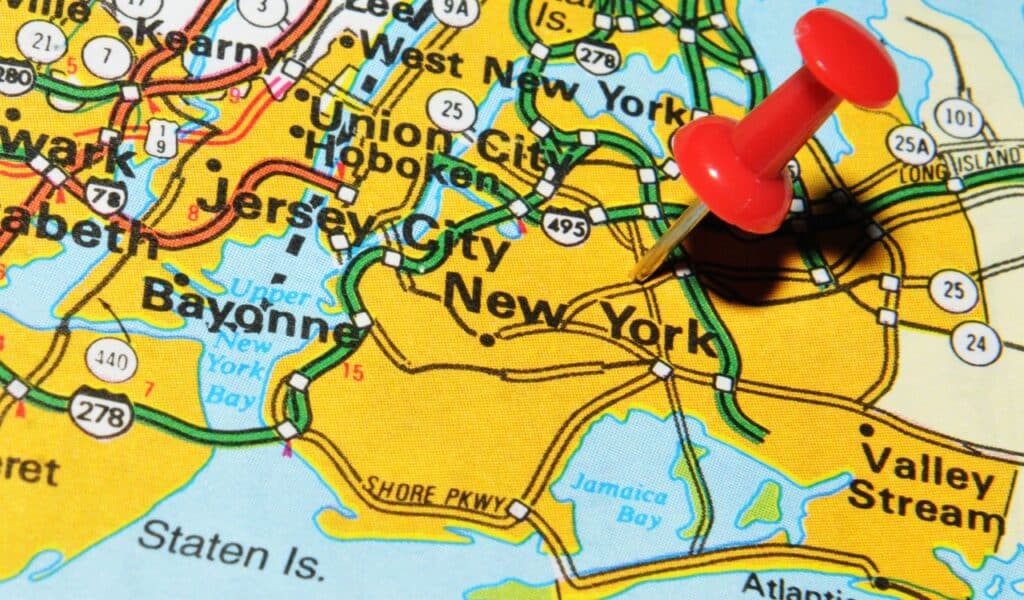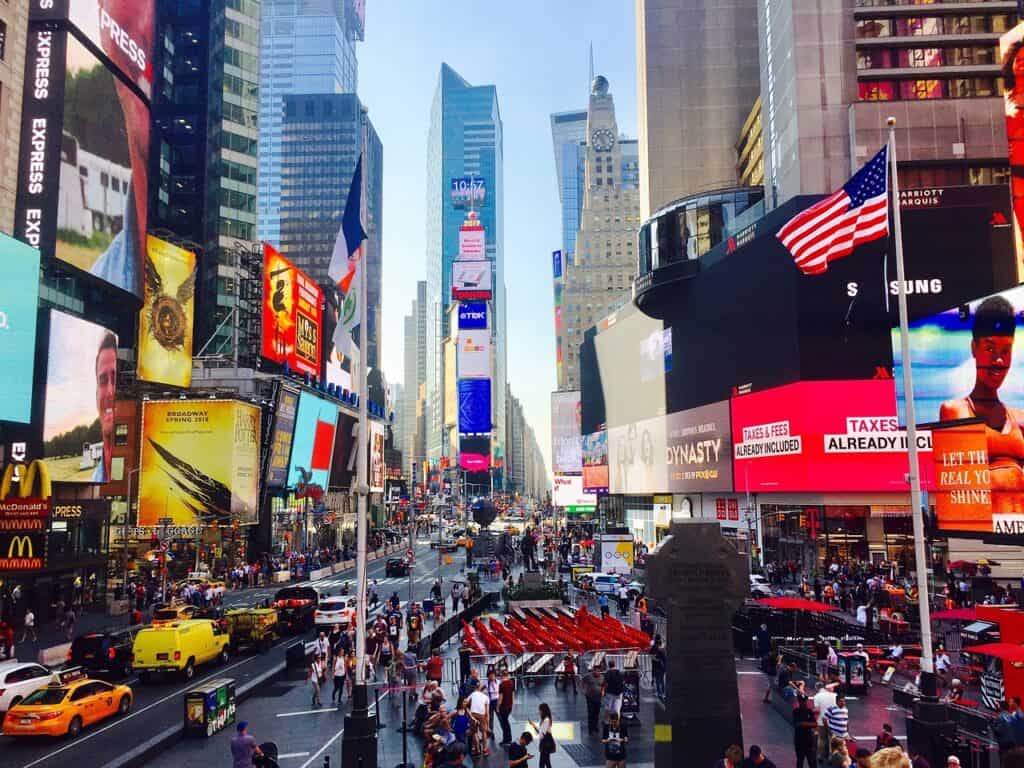We may earn money or products from the companies mentioned in this post. This means if you click on the link and purchase the item, I will receive a small commission at no extra cost to you … you’re just helping re-supply our family’s travel fund.
Something unprecedented happened to American tourism in 2025, and most people missed it. While cities across Europe and Asia celebrated record-breaking visitor numbers, the United States quietly became the only developed nation watching its international tourism revenues collapse. The $12.5 billion loss translates to empty hotel rooms in Manhattan, struggling tour operators in San Francisco, and thousands of jobs disappearing from gateway cities. Yet amid this historic downturn, unexpected winners emerged, from Arizona’s desert boom to the cruise industry’s record bookings, rewriting the rules about which destinations thrive in modern America.
America Becomes the Only Nation Losing Tourism While the World Grows

While every other developed nation celebrated tourism recovery, the United States became the global outlier nobody expected. International arrivals to America remain frozen at just 91% of pre-pandemic levels even as global tourism grew 5% in Q1 2025, creating a shocking divergence that puzzles industry experts. What makes this historic is the contrast: Americans themselves are traveling more than ever, pushing domestic trips to 101% of 2019 levels and generating 2.43 billion journeys within U.S. borders. The disconnect reveals something profound about America’s position in the global tourism marketplace. Overseas visitors are choosing European and Asian destinations instead, fundamentally reshaping decades of travel patterns.
Six Gateway States Lose Nearly All of the $12.5 Billion

California, New York, Florida, Hawaii, Nevada, and Michigan weren’t just hit hard. They absorbed virtually the entire $12.5 billion international tourism collapse that dropped U.S. spending from $181 billion to $169 billion. California’s international arrivals plunged 11% while New York suffered a devastating 12% drop, numbers that translate to empty hotel rooms in San Francisco and shuttered tour buses in Manhattan. The 7% year-over-year decline sits 22% below the 2019 peak, marking a dramatic reversal from what was supposed to be a recovery year. These six states made this list because they built entire economic ecosystems around international visitors, and when those tourists vanished, the ripple effects touched everyone from airport shuttle drivers to luxury retailers on Fifth Avenue.
New York Abandons Its Recovery Dream and Loses $4 Billion

In a stunning reversal that shocked the tourism industry, New York City’s tourism agency scrapped its optimistic 2025 forecast in July and admitted the unthinkable: 400,000 fewer tourists and $4 billion in lost revenue. What began as confident predictions of pandemic recovery transformed into crisis management as the city’s 12% international arrival drop threatened 350,000 jobs dependent on visitor spending. The Big Apple’s fall from grace carries particular weight because New York traditionally leads American tourism. When NYC struggles, it signals something fundamentally broken in America’s tourism appeal. The city that never sleeps discovered that international visitors can indeed find plenty of sleep elsewhere, choosing London, Paris, and Tokyo over Times Square at rates nobody anticipated.
Florida Breaks Records With 143 Million Visitors Despite Global Trends

Florida achieved what seemed impossible in 2025: record-breaking visitor numbers while sister states hemorrhaged tourists. The Sunshine State welcomed an astonishing 143 million visitors in 2024, climbing from 140.6 million in 2023, with momentum carrying into 2025 as it became one of the few states surpassing pre-pandemic international volumes. What’s fascinating is Florida’s secret weapon: massive domestic appeal that offset international losses, pulling in 130.7 million Americans alongside 8.9 million overseas visitors and 3.4 million Canadians. Disney World and Universal Studios discovered their parks could thrive entirely on American families, effectively becoming domestic destinations that happened to attract international guests rather than the reverse, proving resilience is achievable with the right tourism mix.
Arizona Surges 11% as Desert States Steal Gateway Market Share

While coastal gateway cities struggled, Arizona’s desert landscapes captured an 11% tourism surge in August 2025 that revealed a massive shift in American travel preferences. The Grand Canyon State benefited from travelers actively seeking alternatives to crowded, expensive coastal cities, redirecting their $10,000+ annual travel budgets toward Southwest experiences that felt authentic and accessible. Texas and Massachusetts joined Arizona in outperforming expectations, proving that domestic appeal and regional identity trump international name recognition in 2025’s reshaped tourism landscape. What makes Arizona’s success particularly intriguing is timing. These states invested in experiences rather than international marketing, a strategy paying unprecedented dividends as Americans rediscover destinations in their own backyard.
Canadian Tourism Industry Wins as Americans Cancel U.S. Trips

Canada’s domestic tourism emerged as an unexpected beneficiary of America’s collapse, with Canadians canceling U.S. trips and choosing to travel within their own country instead. While 36% of Canadians canceled planned U.S. visits due to tariffs and political tensions, Americans continued booking Canadian vacations, creating a lopsided advantage for Canada’s hospitality sector. The weaker Canadian dollar attracted international tourists who might have chosen the United States, while bookings on Canada-to-U.S. routes plunged over 70% compared to last year. Canadian retail and tourism industries are experiencing what experts call an “interesting dynamic,” benefiting from both domestic redirection and continued American interest, making Canada one of 2025’s clearest tourism winners.
Visa Barriers and Policy Failures Drive Permanent Tourist Exodus

Rising visa fees and processing nightmares created an entirely predictable outcome: international travelers chose destinations that actually wanted them. Tourism Economics dramatically reversed its 2025 forecast from 8.8% growth to 9.4% decline after realizing that America’s bureaucratic hurdles weren’t temporary inconveniences but permanent deterrents. Wait times of up to 700 days for visas in countries like Brazil, Turkey, and Colombia made European alternatives vastly more appealing. What started as security measures transformed into economic sanctions against America’s own tourism industry, with processing delays and unpredictable approvals convincing travelers that Paris, Barcelona, and Tokyo offered better value and far less hassle than dealing with U.S. immigration.
Cruise Lines and Hotels Win With Pricing Power Despite Fewer Visitors

The 2025 tourism collapse created unexpected corporate winners who mastered the art of doing more with less. Cruise lines posted 7% growth with $17 billion in advance bookings, capitalizing on Americans redirecting international vacation budgets toward domestic-departure cruises to the Caribbean and Alaska. Hotels maintained revenue despite lower occupancy by raising room rates strategically, with average daily rates climbing enough to generate 4% sales growth even as fewer heads filled beds. Online travel agencies projected 5% growth through mobile bookings and alternative accommodations like Airbnb and vacation rentals. These industries made the list because they prove a counterintuitive truth: in tourism’s new economy, capturing American spending at premium prices beats chasing vanished international volume.
Domestic-Focused States Rewrite America’s Tourism Map Permanently

The 2025 inbound collapse revealed which states built tourism economies for the future versus those trapped in the past. Domestic tourism roared to 101% of pre-pandemic levels as 57% of Americans took longer trips, generating $1.122 trillion across 2.43 billion journeys within U.S. borders. States with strong regional appeal (national parks, authentic cultural experiences, and accessible road-trip destinations) captured massive market share from struggling international gateways that once dominated. This transformation earned its spot because it reveals the future: America’s tourism economy permanently splitting into parallel universes where domestic-focused destinations thrive while international gateways face structural decline, with total travel spending projected to grow 3.9% in 2025 despite international weakness defining the year
Other Blog Posts You Might Enjoy
www.idyllicpursuit.com (Article Sourced Website)
#State #Tourism #Takeaways #Inbound #Slowdown #Benefits #Idyllic #Pursuit
